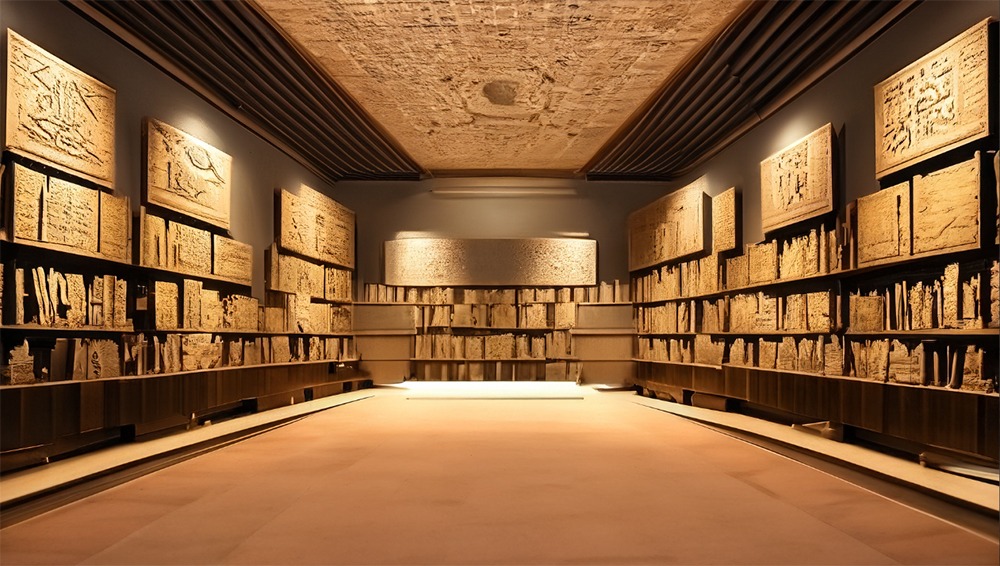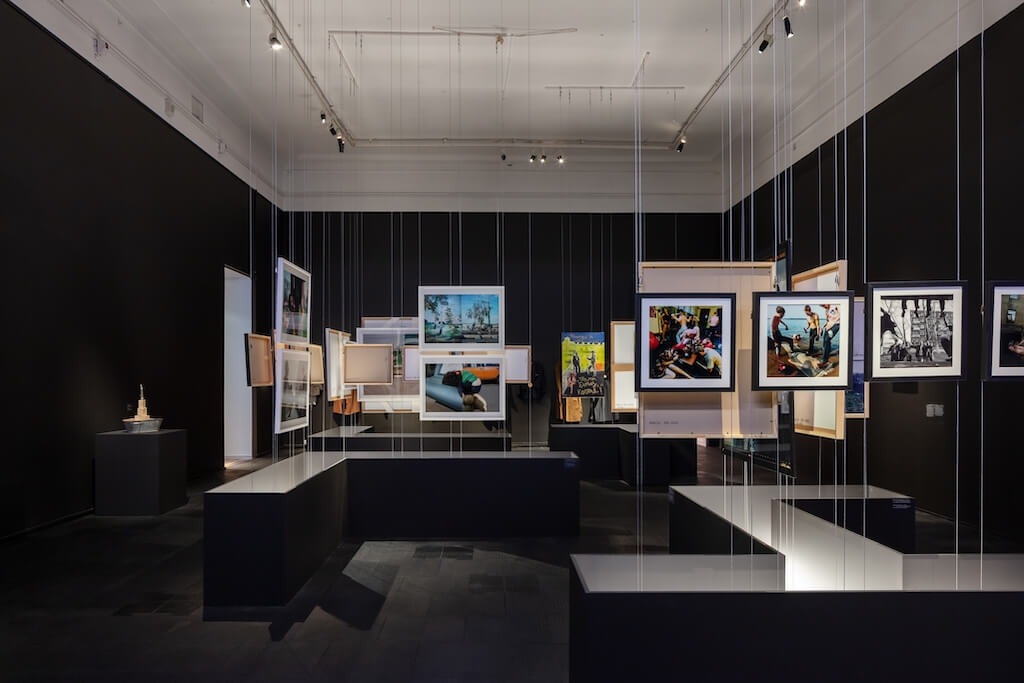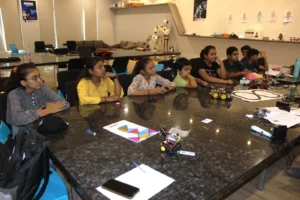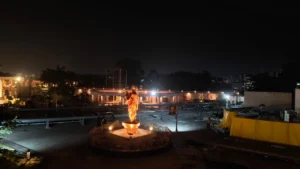
Blogs
The Role of Lighting and Ambience in Museum Exhibit Spaces
Lighting and ambience play a pivotal role in shaping the visitor experience within museum exhibit spaces. From highlighting artifacts to creating immersive environments, strategic lighting transforms a simple display into an engaging narrative. This blog explores the significance of lighting design, technical innovations, and how engineering solutions enhance the aesthetic and functional aspects of museum exhibits.

The Significance of Lighting in Museums
Lighting serves more than just a practical need; it guides visitor attention, sets the mood, and protects artifacts. Here’s why lighting matters:
- Enhancing Visual Appeal
- Artifact Highlighting: Focused lighting techniques, such as spotlights, bring out intricate details in sculptures, paintings, and exhibits.
- Dynamic Displays: Changing light intensities and colors enhance storytelling.
- Creating Emotional Impact
- Ambient Lighting: Sets the tone and evokes emotions aligned with the exhibit’s theme.
- Interactive Elements: Light projections and holographic displays captivate and immerse visitors.
- Preserving Artifacts
- UV Protection: Specialized filters reduce harmful UV rays, preserving sensitive materials.
- Controlled Intensity: Low-intensity lighting minimizes damage to delicate artifacts like textiles and manuscripts.
Innovative Lighting Solutions for Museums
Modern museums use cutting-edge lighting technologies to enhance the visitor experience and ensure sustainability:
- LED Technology
- Energy Efficiency: LEDs consume less energy and last longer, reducing operational costs.
- Color Customization: Adjustable color temperatures provide flexibility to suit different exhibit themes.
- Smart Lighting Systems
- Automation: Sensors adjust lighting based on foot traffic, ensuring optimal illumination.
- App-Controlled Systems: Remote control for instant lighting adjustments.
- Projection Mapping
- Immersive Experiences: Holographic projections create three-dimensional visuals that enhance storytelling.
- Spatial Awareness: Projections guide visitors through galleries with visual cues.

Engineering Behind Museum Lighting Design
Creating the perfect lighting setup requires meticulous planning and technical expertise:
- Architectural Integration
- Hidden Fixtures: Recessed lighting maintains aesthetic integrity while effectively illuminating exhibits.
- Adaptive Designs: Modular lighting systems accommodate changing exhibit layouts.
- Specialized Equipment
- Track Lighting: Offers flexibility to adjust the direction and focus of lights.
- Fiber Optic Systems: Provide precise illumination without emitting heat.
- Sustainable Practices
- Daylighting: Incorporating natural light through controlled skylights and reflective surfaces.
- Energy Management: Integrating renewable energy sources to power lighting systems.
Ambience and Visitor Engagement
Lighting significantly influences how visitors perceive and interact with exhibits:
- Multi-Sensory Environments
- Sound and Light Integration: Coordinated audio-visual effects enhance thematic presentations.
- Interactive Installations: Features like LED Walls and motion-triggered lighting actively engage visitors.
- Wayfinding and Accessibility
- Tactile and Visual Cues: Lighting guides visitors through galleries, aiding navigation.
- Inclusive Design: Adjustable lighting ensures visibility for visitors with varying visual abilities.
- Thematic Lighting
- Exhibit-Specific Ambience: Tailored lighting setups reflect the mood and narrative of each gallery.
- Seasonal Adjustments: Dynamic lighting schemes align with special exhibitions or events.
Trends in Museum Lighting Design
Lighting technology is evolving with exciting possibilities for museum spaces:
- Artificial Intelligence and Automation
- AI-Powered Systems: Predictive algorithms adjust lighting based on visitor patterns.
- Robotic Lighting: Automated fixtures provide precise illumination for dynamic exhibits.
- Augmented Reality Integration
- AR Lighting Effects: Enhance storytelling by overlaying digital visuals onto physical artifacts.
- Holobox Displays: Combine lighting with holographic elements for futuristic exhibits.
- Sustainability and Green Design
- Low-Carbon Materials: Eco-friendly lighting components reduce environmental impact.
- Energy Audits: Regular assessments optimize energy use in lighting systems.

At Peach Prime Consultancy, we specialize in designing museum spaces that seamlessly integrate lighting, technology, and aesthetics. Our services are tailored to meet the unique needs of each project, offering customized lighting design solutions that enhance exhibit appeal and preserve delicate artifacts. We provide engineering expertise through the integration of advanced lighting systems and sustainable practices, ensuring both functionality and environmental responsibility. Our team collaborates closely with architects, interior designers, and technical experts to deliver smooth exhibit design and execution. Additionally, we leverage cutting-edge technologies, including AI, AR, and holographic displays, to create immersive visitor experiences that captivate and engage. Transform your museum into a beacon of innovation and engagement with Peach Prime Consultancy.
We understand the challenges of communicating complex scientific concepts in a museum setting. Our services include comprehensive budget planning and cost estimation to ensure your project aligns with financial expectations, with a detailed breakdown of the total project cost. Our team of experienced designers, educators, and technologists is equipped to create innovative and engaging exhibits that will capture the imagination of visitors of all ages. Whether you are based in New Delhi, Mumbai, Bengaluru, Chennai, Kolkata, Hyderabad, Ahmedabad, Pune, Surat, Jaipur, Lucknow, Kanpur, Nagpur, Indore, Thane, Bhopal, Patna, Vadodara, Ludhiana, Agra, Nashik, Meerut, Rajkot, Kalyan-Dombivli, Varanasi, Srinagar, Amritsar, Allahabad (Prayagraj), Visakhapatnam, Jodhpur, Madurai, Coimbatore, Gwalior, Vijayawada, Guwahati, Mysore, Kota, Ranchi, Jabalpur, Bareilly, Chandigarh, Tiruchirappalli, Noida, Ghaziabad, Dhanbad, Raipur, Aurangabad, Bhubaneswar, Dehradun, Udaipur, and Mangalore.
we offer a comprehensive range of services to support your project. These include concept development and master planning, content curation and scriptwriting, exhibit design and fabrication, and interactive media development.










